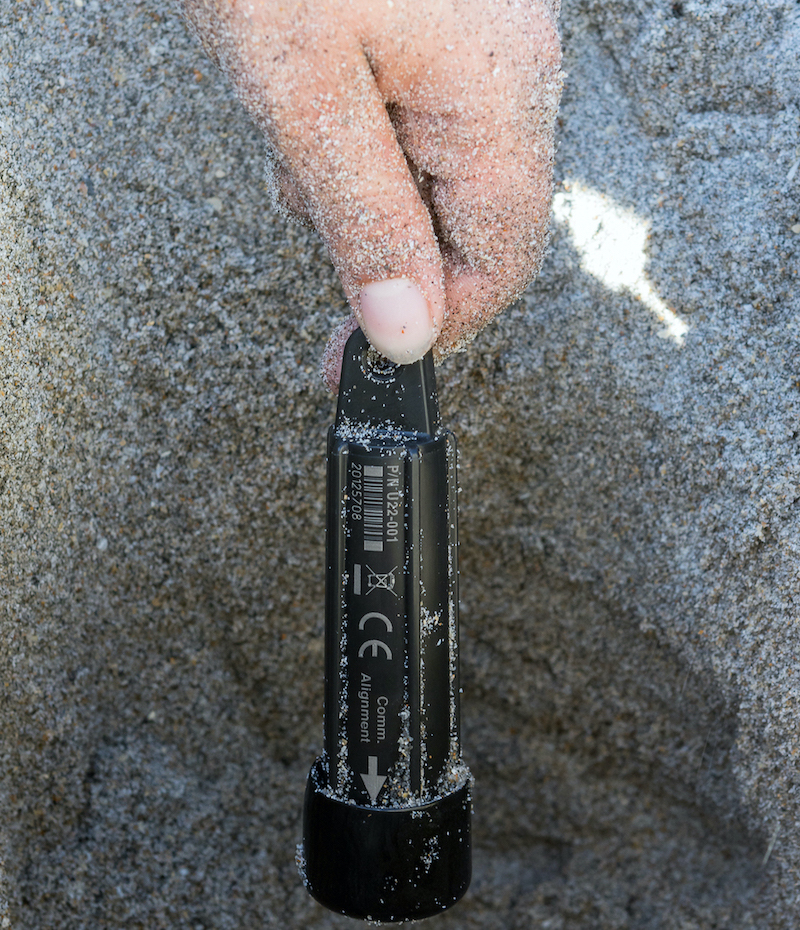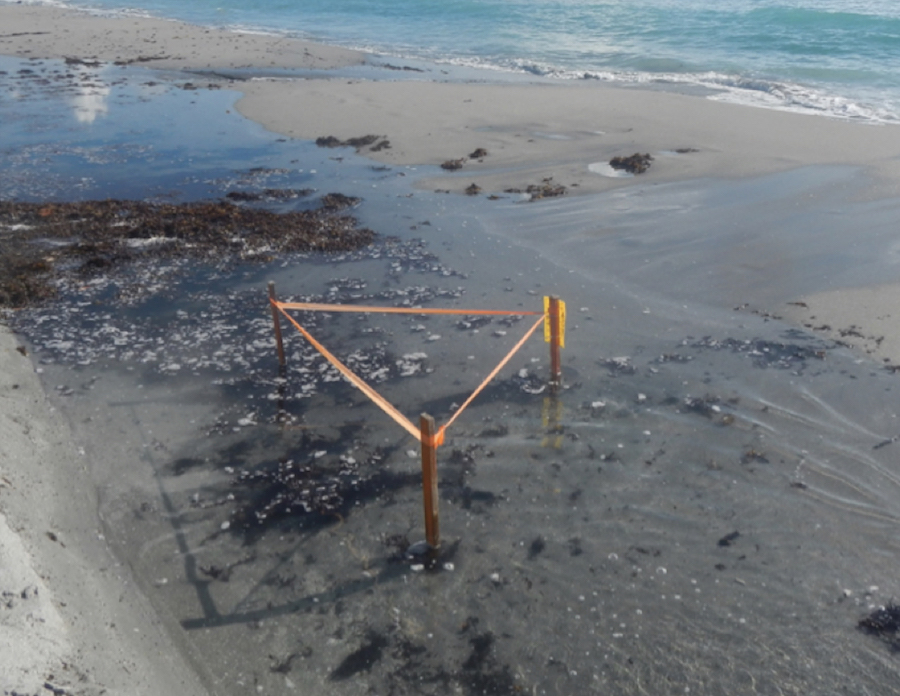
 Temperature and Development
Temperature and DevelopmentOnce a female sea turtle lays a clutch of eggs in her underground nests on the beach, the nest’s environment directs the fates of the eggs. Temperature, moisture, the amount of oxygen, and even sand grain characteristics can have dramatic effects on the developing turtles. Sea turtle embryos cannot survive if the nest gets too hot or cold. Here in South Florida, our beaches are getting warmer, and if a nest is too hot for too long, the heat can kill many of the developing sea turtles. By tracking the temperature of the nest throughout incubation we find that the amount of time nests spend incubating above 34°C (93°F) is important.
By also examining the developmental stages of those embryonic turtles that don’t survive, we are beginning to see when the embryos are most vulnerable to increasing temperatures.
 Turtle Smarts
Turtle SmartsExtreme heat during incubation may even have a lasting effect on sea turtles that do survive and make it to the water. We are testing hatchlings from nests that incubated under hot conditions and those that incubated under warm conditions to measure impacts of hatchling intelligence. If incubation temperatures affect how “brainy” turtles are, hotter incubation temperatures may affect their ability to learn or recognize key things in the environment. For example, hatchlings must be able to search for food and escape from predators. If they don’t recognize either, they are not likely to survive. We have found that turtles from hotter nests crawl more slowly and take longer to flip over when up-ended. Both problems can leave them exposed to predators as they try to make their way from the nest to the ocean.
 Too Much Water
Too Much WaterExcess moisture from extremely high tides or hurricanes can have devastating effects on turtle development. Despite being buried in the sand, the developing embryos use oxygen as they develop. Normally there is enough air between sand grains to meet the embryo's oxygen needs and allow carbon dioxide to diffuse away. If a nest is flooded, the air spaces in the sand fill with water, and the developing turtles cannot get enough oxygen. The eggs with their embryos will not survive.